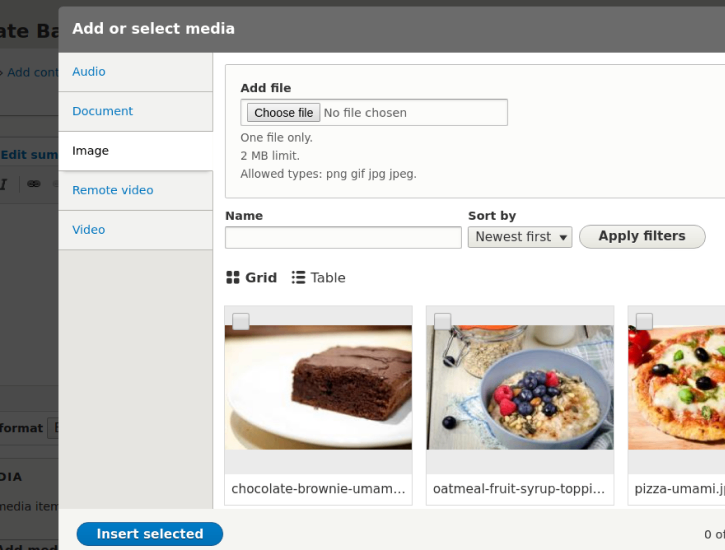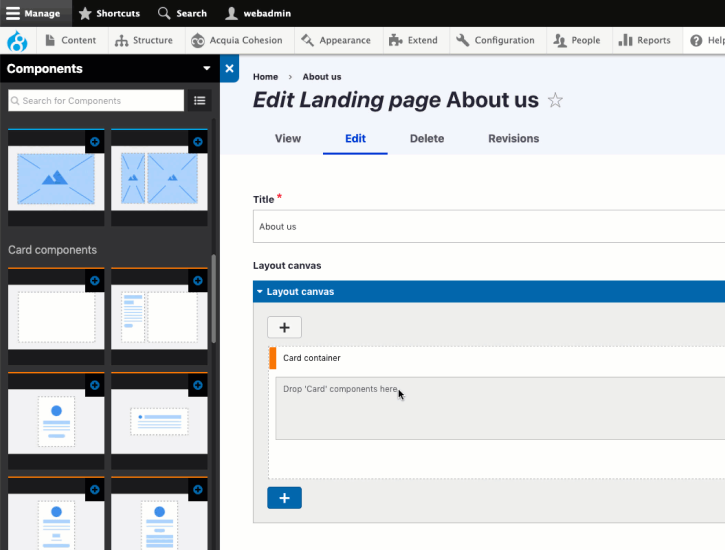Driving Faster Multi-Brand Launches
As the Ironman Group expanded its global portfolio of endurance events, it faced a growing challenge: each brand and event website operated independently, with inconsistent design, data models, and marketing workflows.
Ironman partnered with Axelerant to build a unified Digital Experience Platform (DXP) powered by Drupal—a platform that would streamline brand rollouts, standardize governance, and integrate seamlessly with HubSpot for data-driven marketing activation.
About the Customer
The IRONMAN Group is the world’s largest operator of mass participation sports, with a global portfolio spanning triathlons, marathons, trail running, road cycling, and multi-sport events. Its brands include the iconic IRONMAN® and IRONMAN® 70.3® Triathlon Series, the Rock ‘n’ Roll® Running Series, IRONKIDS®, the Epic Series™ mountain bike races, and the UTMB® World Series.
Since its first triathlon in 1978, IRONMAN has grown into a worldwide movement, delivering hundreds of events across more than 55 countries. Known for its “Anything Is Possible®” ethos, the organization inspires millions of athletes—from first-timers to seasoned professionals—to achieve extraordinary personal milestones.
- 170+
Annual Events Globally
- 200K+
Athletes Registration Annually
- 55+
Countries Covered

The Challenge
Operating dozens of brand websites on disconnected systems introduced operational inefficiency and diluted the athlete experience.
Key challenges included:
- Fragmented multi-brand architecture: Each new series or event launch required significant rework.
- Manual data coordination: Registration, event details, and CRM updates were slow and error-prone.
- Editorial bottlenecks: Automated syncs overwrote editorial changes, reducing trust in the system.
- Inconsistent design governance: Brand managers struggled to maintain individual brand character without breaking global standards.
- Limited marketing automation: Without unified event and participant data flowing into HubSpot, campaign personalization and athlete journey mapping were restricted.
- Scaling pressure: New global series like Rock ’n’ Roll and Epic required faster go-to-market with unified technology and marketing systems.
The goal was clear: build a composable, data-enabled DXP that powered both brand scalability and continuous athlete engagement.

The Solution
Axelerant delivered a holistic transformation that unified the experience, data, and activation layers — integrating Drupal’s composable flexibility with HubSpot’s automation and analytics capabilities.
The engagement spanned platform rebuild, data governance, and conversion strategy — culminating in a digital ecosystem engineered for speed, reliability, and personalization.
Experience Layer — Governance and Speed Across Brands
Axelerant implemented a governance-first component architecture leveraging Drupal, Acquia Cloud, and Site Studio, balancing reusability with brand individuality.
- Component Reusability Audits: Analyzed Ironman’s legacy components to determine what to reuse, refactor, or rebuild, cutting technical debt by 40%.
- Flexible Theming System: Enabled distinct brand expressions for Rock ’n’ Roll and Epic Series without separate codebases.
- Editorial Empowerment: Introduced granular permissions, reusable templates, and in-context editing, giving regional content teams control without compromising governance.
- Multilingual and Accessibility Upgrades: Built support for localized content (including Catalan and Spanish) and WCAG 2.1 AA accessibility compliance.
- Design Consistency Engine: Used Site Studio theming controls to manage brand contrast, typography, and component variation — ensuring visual precision across brands.
This architecture became a DXP foundation — one shared codebase, multiple identities, infinite scalability.
Data Layer — From Fragmented Syncs to Governed, Real-Time Data
Axelerant replaced brittle, cron-based integrations with a webhook-driven data model that connected event systems, CRMs, and HubSpot.
- Webhook Integrations: Data updates triggered automatically from core systems only when marked “Send to Web,” reducing processing load by 70%.
- Structured Content Models: Migrated legacy Hall of Fame, athlete, and event data into standardized Drupal content types with unique identifiers.
- Data Accuracy and Reliability: Validation and revision workflows eliminated duplicate entries and ensured synchronization integrity.
- Unified Analytics Foundation: Standardized event metadata, registration details, and athlete attributes, enabling cross-brand data analytics.
The outcome was a single source of truth for content and athlete data — a prerequisite for HubSpot-driven automation and segmentation.
Activation Layer — HubSpot Integration and Conversion Strategy
Once the platform’s data was stabilized, Axelerant integrated HubSpot as the activation engine to automate athlete communications and drive measurable conversions.
- Data Sync with HubSpot: Drupal event and registration data now flowed directly into HubSpot via governed APIs, ensuring complete athlete lifecycle visibility.
- Automated Workflows: Over 30 workflows powered communications across event reminders, registration follow-ups, loyalty campaigns, and post-race engagement.
- Audience Segmentation: Dynamic lists built using engagement history, geography, and event type enabled hyper-personalized outreach.
- Conversion Triggers: Real-time behavioral signals — such as cart abandonments, registration starts, or post-race surveys — automatically launched contextual emails.
- Performance Dashboards: HubSpot analytics visualized open rates, engagement scores, and conversion performance by event and campaign.
- Testing and Optimization: Continuous A/B testing improved CTA placement, email cadence, and retargeting efficiency across Rock ’n’ Roll and Epic Series sites.
The marketing and event operations teams now operated in lockstep — data connected decisions, automation amplified outcomes.
Conversion Strategy — Data-Driven Athlete Journeys
With the DXP and HubSpot fully aligned, Axelerant built a continuous optimization framework focused on measurable athlete conversion and retention.
- Journey Mapping: Finetuned the athlete lifecycle — from registration to event day to post-race community engagement.
- Personalized Nurture Paths: Tailored content flows (training guides, product offers, event previews) to each user segment.
- Multi-Channel Automation: Coordinated communications across email, social, and in-site banners — reducing manual coordination by 45%.
- Conversion Measurement: Tracked micro and macro conversions — registration completions, repeat participation, and referrals — across the entire athlete lifecycle.
- Continuous Feedback Loop: Data insights fed directly back into content and campaign planning, turning every launch into a test-and-learn cycle.
This data-informed conversion strategy turned Ironman’s marketing ecosystem from reactive to predictive — guiding athletes from one race to the next.

The Result
The partnership delivered measurable impact across operations, engagement, and marketing performance:
Operational Efficiency
- Reduced manual coordination time between event ops and marketing.
- Reduced campaign setup turnaround time.
- Multiple automated HubSpot workflows across channels.
Engagement and Conversion
- Increased athlete engagement rate.
- Rise in returning event registrants.
- Significant increase in repeat participation rate.
- Reduced manual communication effort through automation.
Qualitative Impact
- Streamlined, consistent brand experience across Ironman, Rock ’n’ Roll, and Epic Series.
- Rebuilt trust in data accuracy and editorial control.
- Unified marketing and operations teams under one data-driven engagement model.
- Seamless athlete lifecycle — from registration to post-race reactivation — powered by integrated HubSpot automation.
Ironman’s new DXP is more than a website infrastructure — it’s a multi-brand engagement engine that connects experience, data, and activation into a single continuum.
The launch of Rock ’n’ Roll and Epic Series proved the system’s agility, massively cutting development time, and transformed how the brand communicates, learns, and grows.
What once required weeks of manual coordination now happens in hours, with every athlete journey measurable, repeatable, and improvable.
Project Highlights
-
Structured Content Models
-
Reusable Component Architecture
-
Webhook-Driven Integrations
Structured Content Models
One critical challenge was transforming messy, inconsistent API payloads into structured Drupal content. The Axelerant team developed governed content models for entities like Hall of Fame athletes:
- Unique IDs ensured that each profile was consistent and prevented duplication.
- Legacy media was migrated into Drupal’s Media library, centralizing assets for long-term management.
Validation rules ensured that required data fields were enforced, raising overall content quality.
The result was content that was not only accurate but future-proofed for scaling across additional brands.

Reusable Component Architecture
Rather than rebuilding each brand site from scratch, Axelerant performed a component audit of the Ironman platform. Site Studio components, templates, and helpers were selectively reused, ensuring speed without sacrificing brand individuality.
- Each event site could carry unique branding, logos, color palettes, and navigation, while still sharing a common platform backbone.
- Reusability audits prevented technical debt from creeping in, as weaker components were refactored or rebuilt. This balance between reuse and flexibility created an enterprise-ready, multi-brand architecture.

Webhook-Driven Integrations
The move from cron jobs to webhook pipelines was one of the most significant improvements. Cron jobs had been causing duplication, overwrites, and unnecessary processing. By introducing webhook-driven integrations:
- Updates were triggered only when marked “Send to Web,” reducing API and database load.
- Editors gained confidence, as webhooks created new drafts or revisions instead of overwriting content.
Secure API key authentication and detailed error logging gave the integration the resilience and transparency that enterprise systems demand.
This shift redefined how integrations worked across brands, creating a reusable pattern for future third-party system connections.
Future Enablement For The Client
Looking ahead, the objective is to provide continuous support in maintaining the website and continuous development to elevate the business on the website. This support is crucial for maintaining site stability and addressing any issues that may arise.
Get in touch.
Send us a message and connect with one of our brand consultants to find out exactly how we can help you.